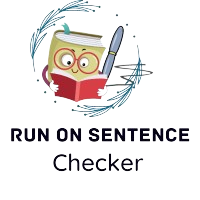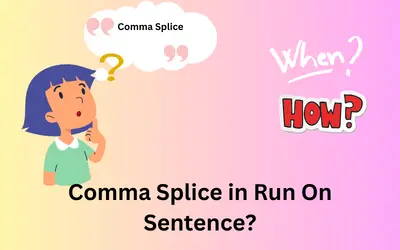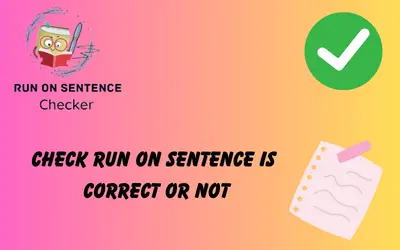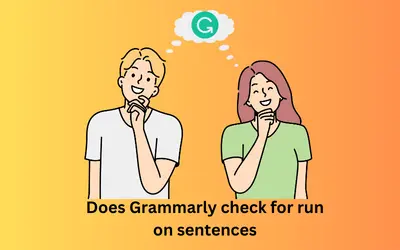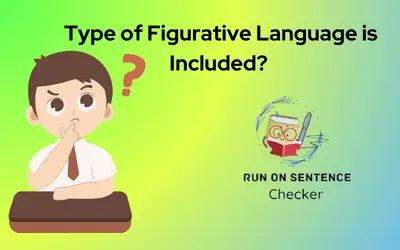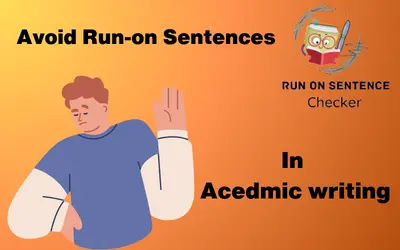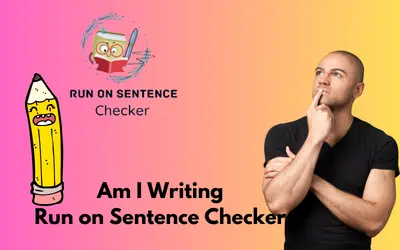Writing is an art, and even the most experienced authors might face difficulties in How to Fix Fragment Sentences with a Run On Sentence Checker such as fragment sentences and run-on sentence fixer especially checking grammar checker. These flaws not only reduce the readability of your material, but also its quality. In this complete article, we’ll look at Fix Fragment Sentences with a Run On Sentence Checker & in future our fragment checker Tool will also helps you.
What are Sentence Fragments?
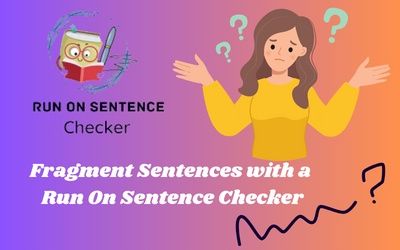
In the vast landscape of grammar, sentence fragments stand as common pitfalls that can disrupt the flow and clarity of written communication. Let’s delve into the intricacies of sentence fragments, their types, and how to rectify them for effective writing.
Sentence fragments are incomplete sentences that lack either a subject, a predicate, or fail to express a complete thought. They often occur due to incomplete clauses or phrases, impacting the overall coherence of written content.
Clear and concise communication is paramount in both formal and informal writing. Sentence fragments hinder this clarity, making it essential for writers to understand, identify, and rectify them.
Understanding Sentence Fragments
One of the primary sources of sentence fragments is the dependent clause – a group of words that cannot stand alone as a complete sentence. Recognizing and addressing dependent clauses is crucial in mastering sentence structure. Sentence fragments share common traits such as lacking a subject or verb. Understanding these characteristics helps writers spot and correct fragments effectively.
Impact on Communication
Sentence fragments can lead to misinterpretation, confusion, and hinder the overall effectiveness of written communication. It’s crucial to grasp their implications for better writing.
Types of Sentence Fragments for Run On Sentence Structure
Dependent Clause Fragments
These fragments often begin with subordinating conjunctions and fail to provide a complete thought. Understanding the nuances of dependent clauses is key to avoiding these fragments while academic writing.
To avoid dependent clause fragments, writers must learn to seamlessly integrate these clauses into their sentences. This involves connecting them to independent clauses to form a comprehensive thought.
For example, the previous fragment transforms into a complete sentence when combined with an independent clause: “Because I was tired, I decided to take a nap.”
Phrase Fragments
Phrase fragments, stemming from incomplete phrases, contribute to the breakdown of sentence structure. Addressing and completing these fragments are essential for maintaining the coherence and flow of written communication.
Incomplete phrases often lack a subject, verb, or both, making them incapable of conveying a full idea independently. Writers should pay close attention to sentences where phrases are left dangling, requiring completion for clarity.
Consider the following example: “In the moonlight.” This fragment lacks a subject and a verb, leaving readers with an unfinished picture. By completing it with an independent clause, such as “The cat howled in the moonlight,” the fragment transforms into a coherent sentence.
Appositive Fragments
Appositives, valuable tools for enhancing sentence structure, can become problematic if misused, leading to fragments. Understanding their correct placement and punctuation is imperative to sidestep these issues and harness their full potential.
Appositives must be carefully integrated into sentences to avoid disruption.
Consider the fragment: “A talented musician, his guitar skills amazed the audience.” In this case, the appositive disrupts the flow, creating confusion. A better construction would be, “His guitar skills amazed the audience; a talented musician, he played with unparalleled skill.”
Mastering these nuances of dependent clause fragments, phrase fragments, and appositive fragments empowers writers to produce content that not only adheres to grammatical conventions but also captivates and engages readers effectively.
How to Fix Fragment Sentences with a Run On Sentence Checker
Let me share the tips of how to fix a fragment sentence. It will help you a lot in your writing Skills
- Connecting Fragments to Main Clauses
Connecting fragments to main clauses involves identifying the missing elements in the fragment and incorporating them into a broader context. This connection ensures that the fragment becomes an integral part of a well-formed sentence.
Main clauses serve as the backbone of sentences, offering the necessary context for fragments to make sense. Writers must ensure that the fragment aligns logically with the main clause, creating a unified and comprehensible message.
Consider the fragment: “Sprinted down the street.” Connecting this fragment to a main clause results in a more complete sentence: “She sprinted down the street, chasing after the runaway dog.”
- Adding Necessary Components
Completing sentence fragments involves identifying and adding the missing components, such as subjects, verbs, or other essential elements. This transformative process turns incomplete thoughts into well-structured sentences that effectively convey the intended message.
Writers must carefully analyze fragments to pinpoint the elements that render them incomplete. Whether it’s a lacking subject, a verb, or another crucial component, identifying these gaps is the first step toward effective correction.
Take the fragment: “Wandered aimlessly in the park.” By adding a subject and a verb, it transforms into a complete sentence: “She wandered aimlessly in the park, contemplating life’s mysteries.”
- Rewriting for Clarity
In certain instances, addressing sentence fragments may necessitate a complete rewrite of the content. This approach ensures not only the elimination of the fragment but also the coherent expression of thoughts. Engaging in this step-by-step process contributes to the refinement of writing skills. A complete rewrite should focus on maintaining the coherence of the content while addressing the issues present in the fragment. Writers should strive for fluidity and a logical progression of ideas throughout the revised passage.
Consider the fragment: “Despite the rain, walking in the garden.” A comprehensive rewrite could be: “Despite the rain, she found solace in walking through the serene garden, the droplets enhancing the tranquility of the moment.”
This step-by-step process of connecting fragments to main clauses, adding necessary components, and rewriting for clarity equips writers with the tools to not only correct sentence fragments but also to enhance the overall quality and effectiveness of their Writing Run on Sentence Checker Online Free for daily Purpose.
Sample Sentences with Fragments Fixer
Exploring authentic examples of sentence fragments provides writers with exposure to different contexts, & sentence fragment fixer while helping them recognize these instances in their own writing. Let’s dissect a few sample sentences:
Original Fragment: “Ran to catch the train.”
Correction: “She ran to catch the train, her backpack bouncing with each step.”
Original Fragment: “Although tired.”
Correction: “Although tired, she continued working on her project, fueled by determination.”
Original Fragment: “In the moonlight.”
Correction: “The garden glowed in the moonlight, creating a tranquil atmosphere
Correcting Fragments in Exercises
Engaging in hands-on exercises is a powerful method to reinforce learning and build confidence in rectifying sentence fragments. Let’s work through a couple of exercises together:
Exercise 1:
Identify and correct the fragment: “After finishing the book.”
Correction: “After finishing the book, she reflected on the plot twists and character development.”
Exercise 2:
Spot the fragment and provide a correction: “Despite the stormy weather.”
Correction: “Despite the stormy weather, they decided to go for a hike, embracing the adventurous spirit.”
Exercise 3:
Identify the fragment and rewrite it: “Talking to her friend on the phone.”
Correction: “While talking to her friend on the phone, she realized the importance of their conversation.
Conclusion
In conclusion, fixing fragment and run-on sentences is a crucial step in improving your writing. Embrace the assistance of run-on sentence checker tools, but also hone your manual proofreading skills for checking run on sentence is correct. The combination will lead to well-structured, clear, and engaging content.
Are run-on sentence checkers foolproof?
While effective, they may miss nuanced errors, so manual proofreading is still recommended.
Can these tools improve my overall writing skills?
Yes, by providing suggestions and explanations, they contribute to skill enhancement over time.
How often should I use run-on sentence checkers?
Regular use is beneficial, but always complement it with manual proofreading for a thorough review.
Do run-on sentence checkers work for all types of writing?
Yes, these tools are versatile and applicable to various writing styles and genres.
Are there free run-on sentence checker options available?
Yes, many online platforms offer free versions with basic features.
